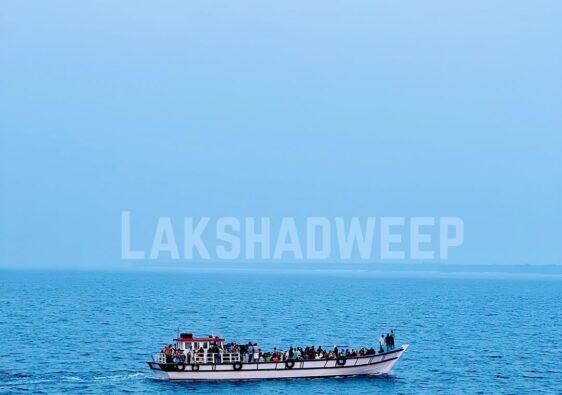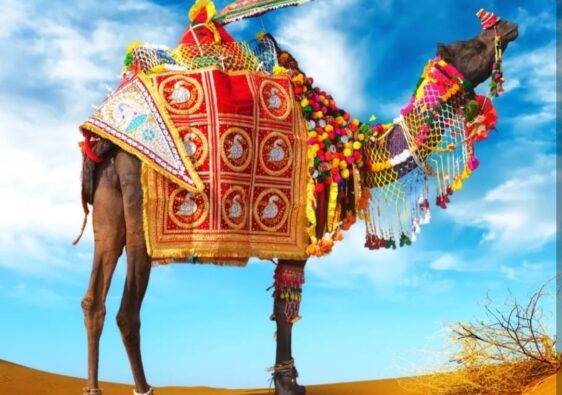If you’ve ever dreamed of walking on a frozen river surrounded by towering cliffs and snowy silence, total distance of 62 kilometers in 8 icy days. the Chadar Trek is your calling. Nestled in the magical region of Ladakh, this unique winter trek takes you over the frozen Zanskar River and offers an unforgettable experience of adventure, beauty, and survival.
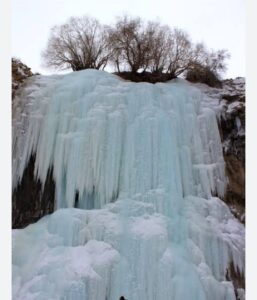
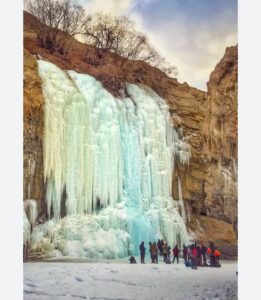
What is the Chadar Trek?
The word “Chadar” means “blanket” in Hindi, and during the winter months, the Zanskar River freezes completely, creating a thick sheet—or chadar—of ice. This trek is unlike any other in India. It’s not about climbing peaks or crossing forests. It’s about walking on a river of ice, sometimes hearing it crack beneath your feet, while snow-covered mountains rise around you like ancient guardians.
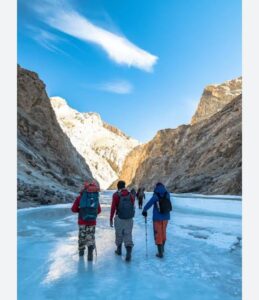
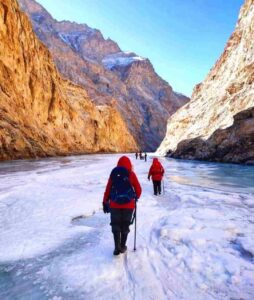
This trek connects the remote Zanskar villages with Leh, the capital of Ladakh, during the harsh winter when all other roads are closed. It’s not just a trek, it’s a lifeline and a tradition that has existed for generations.
The Chadar Trek takes place in the coldest months of the year—January and February—when the temperature can drop as low as -30°C at night. While this may sound extreme, it’s part of what makes the trek so special. You experience the raw, untouched beauty of Ladakh in its most peaceful and isolated form.
How Difficult is the Trek?
The Chadar Trek is considered moderate to difficult. It’s not steep like mountain treks, but walking on ice presents its own set of challenges. You need to be mentally strong and physically fit. Temperatures are low, the nights are freezing, and there’s always some unpredictability with the ice. Sometimes you may need to walk over rocks or wade through icy streams if the river hasn’t frozen properly.
Proper gear, including insulated boots, thermals, gloves, and a reliable sleeping bag, is essential. It’s also highly recommended to do the trek with an experienced guide or through a trusted trekking company for safety.
Highlights of the Chadar Trek
- Nerak Waterfall: This frozen waterfall is one of the main attractions. It looks like nature hit the pause button on a waterfall mid-flow. The sight is surreal and unforgettable.
- Frozen Zanskar River: The chadar itself is the star. Every day the ice changes, and walking on it is like walking on a living, breathing canvas of nature.
- Zanskari Culture: You get a glimpse into the lives of the locals who depend on this route in winter. Their warmth and resilience are truly inspiring.
- Camping in Snow: Sleeping in tents under the Ladakhi sky, surrounded by snow and silence, is an experience that connects you deeply with nature.
- Silence and Solitude: There’s no mobile network, no vehicles, no distractions—just you, the ice, and the mountains. It’s a digital detox like no other.
Things to Keep in Mind
- Altitude: The trek starts at around 11,000 feet, so acclimatization in Leh for at least 2 days before starting is important to avoid altitude sickness.
- Fitness: You don’t need to be an athlete, but a good fitness level helps. Start preparing at least a month before the trek with walking, cardio, and leg-strengthening exercises.
- Respect Nature: This is a fragile environment. Always follow Leave No Trace principles—carry back all your waste, avoid using plastic, and respect local customs.
- Trekking Permits: As the Chadar Trek lies in a sensitive region, you need permits and medical clearance, which are usually handled by trekking agencies.
Travel Tips
- Best Time: Mid-January to mid-February.
- Getting There: Fly to Leh from Delhi. Spend two days acclimatizing before starting the trek.
- What to Pack: Layered clothing, waterproof backpack, insulated boots, sunglasses, lip balm, moisturizer, dry fruits, energy bars, and a reusable water bottle.
- Trekking Operator: Choose a reputed and eco-conscious trekking company. Safety, local support, and sustainability should be their top priorities.


